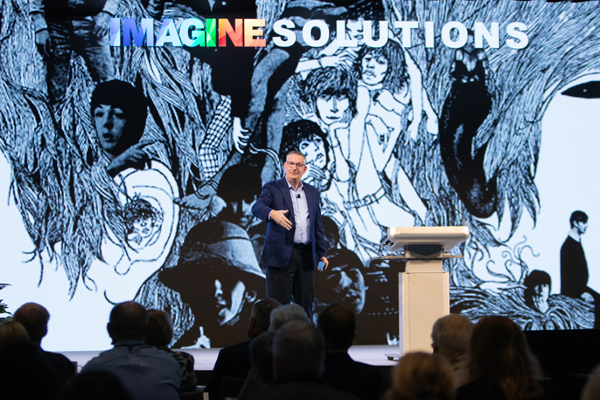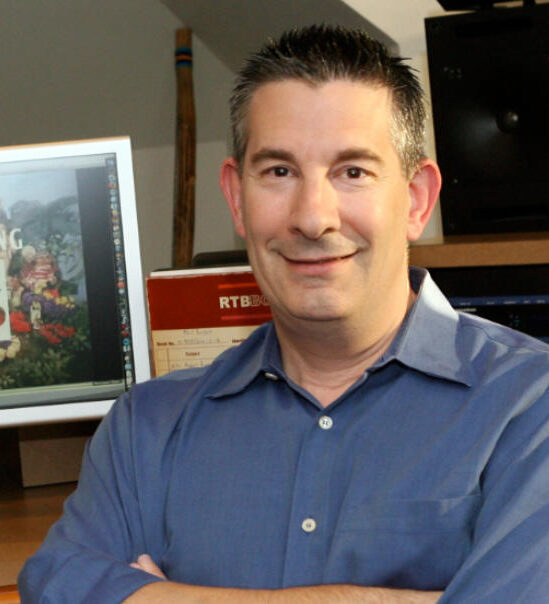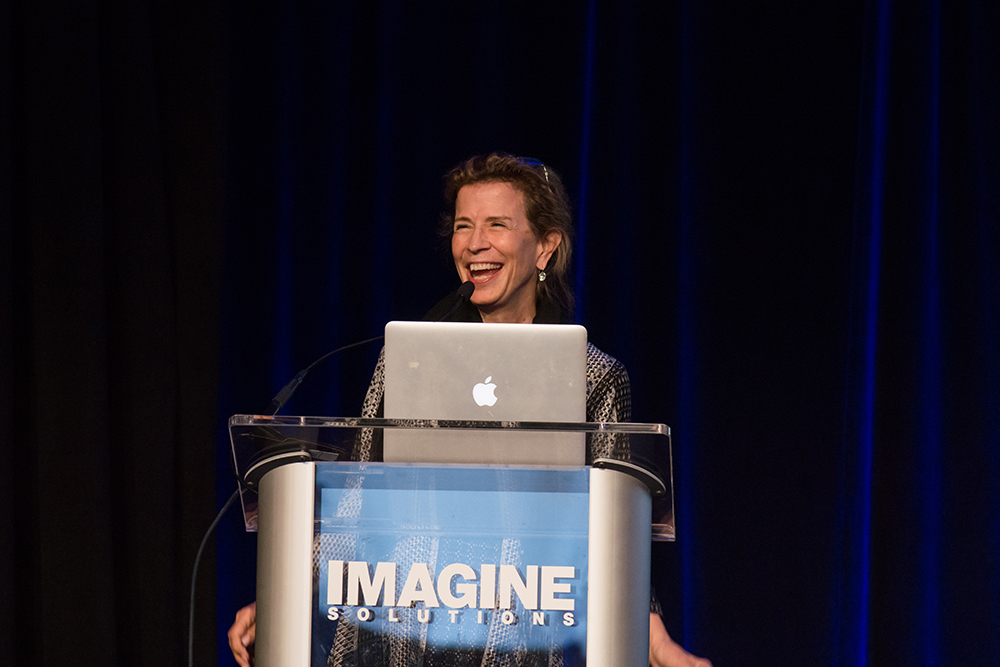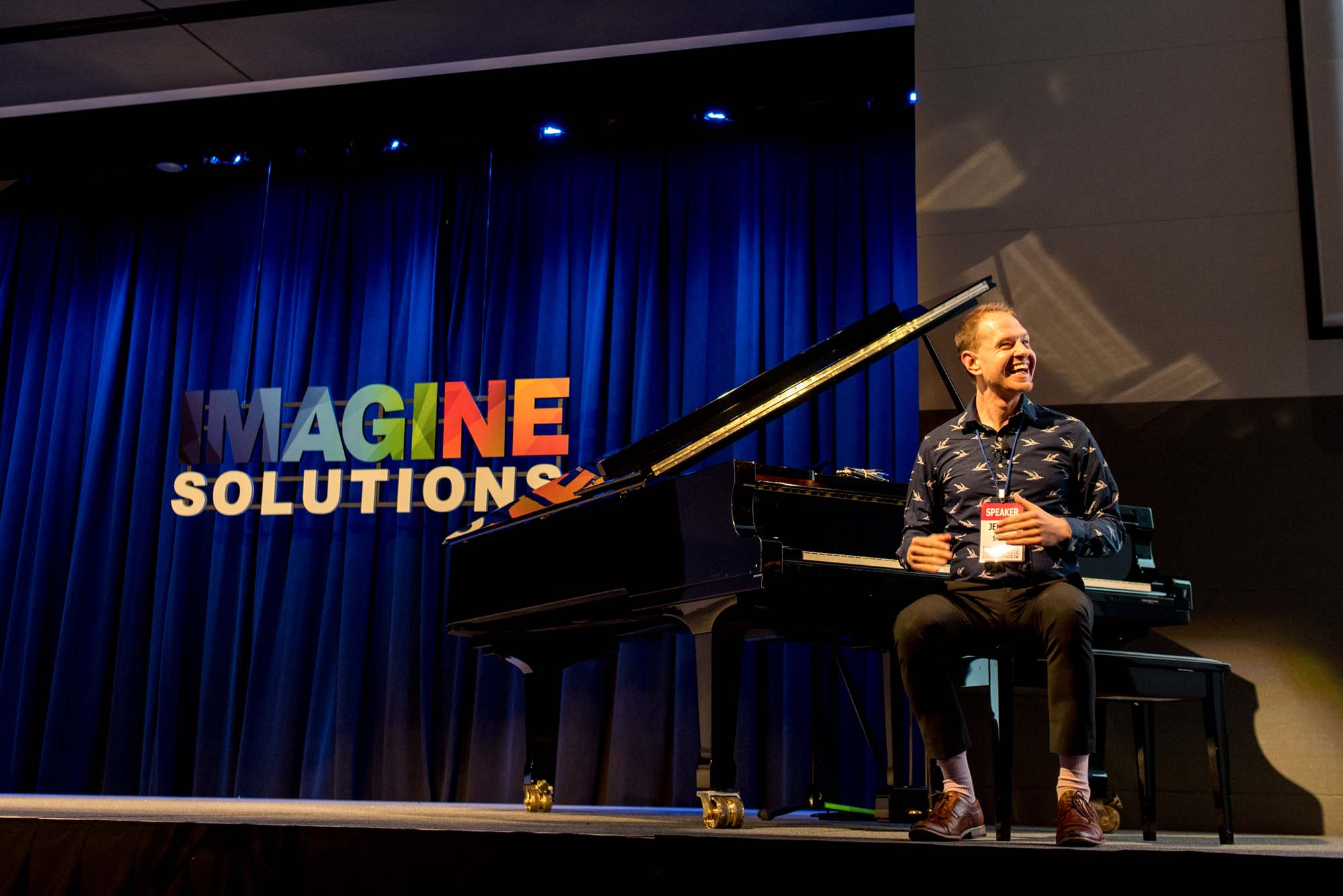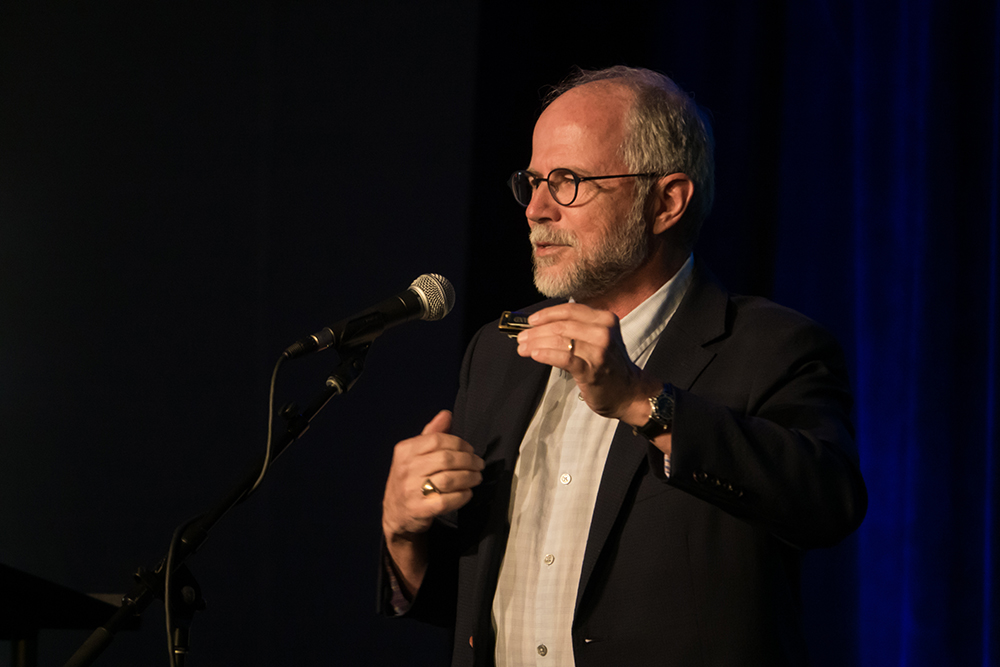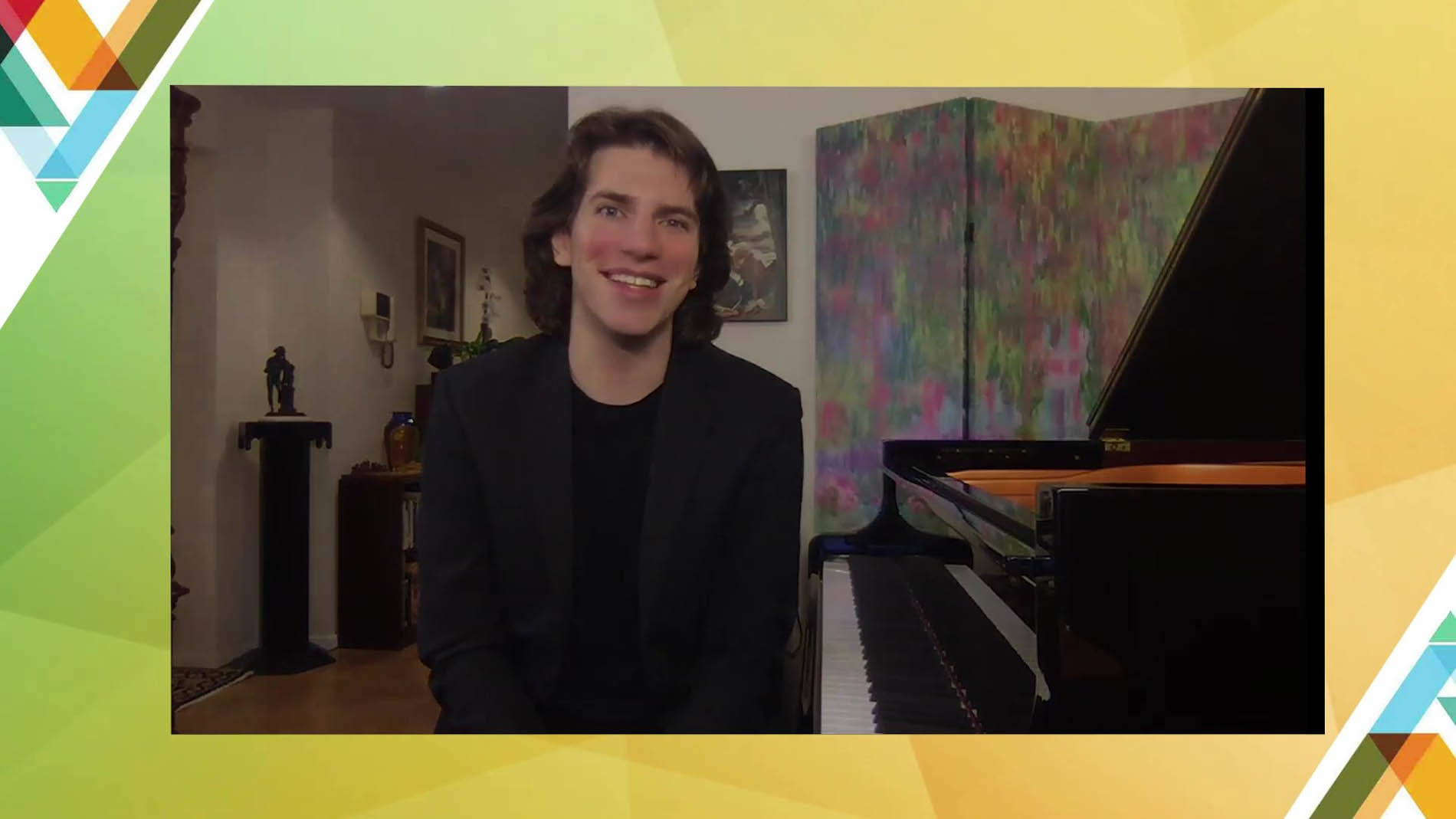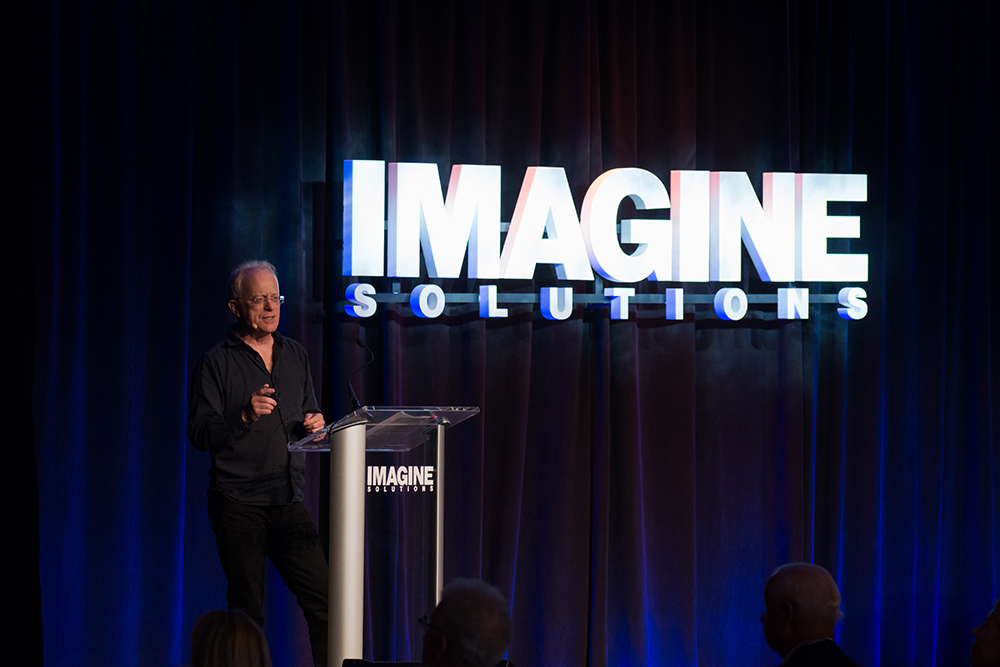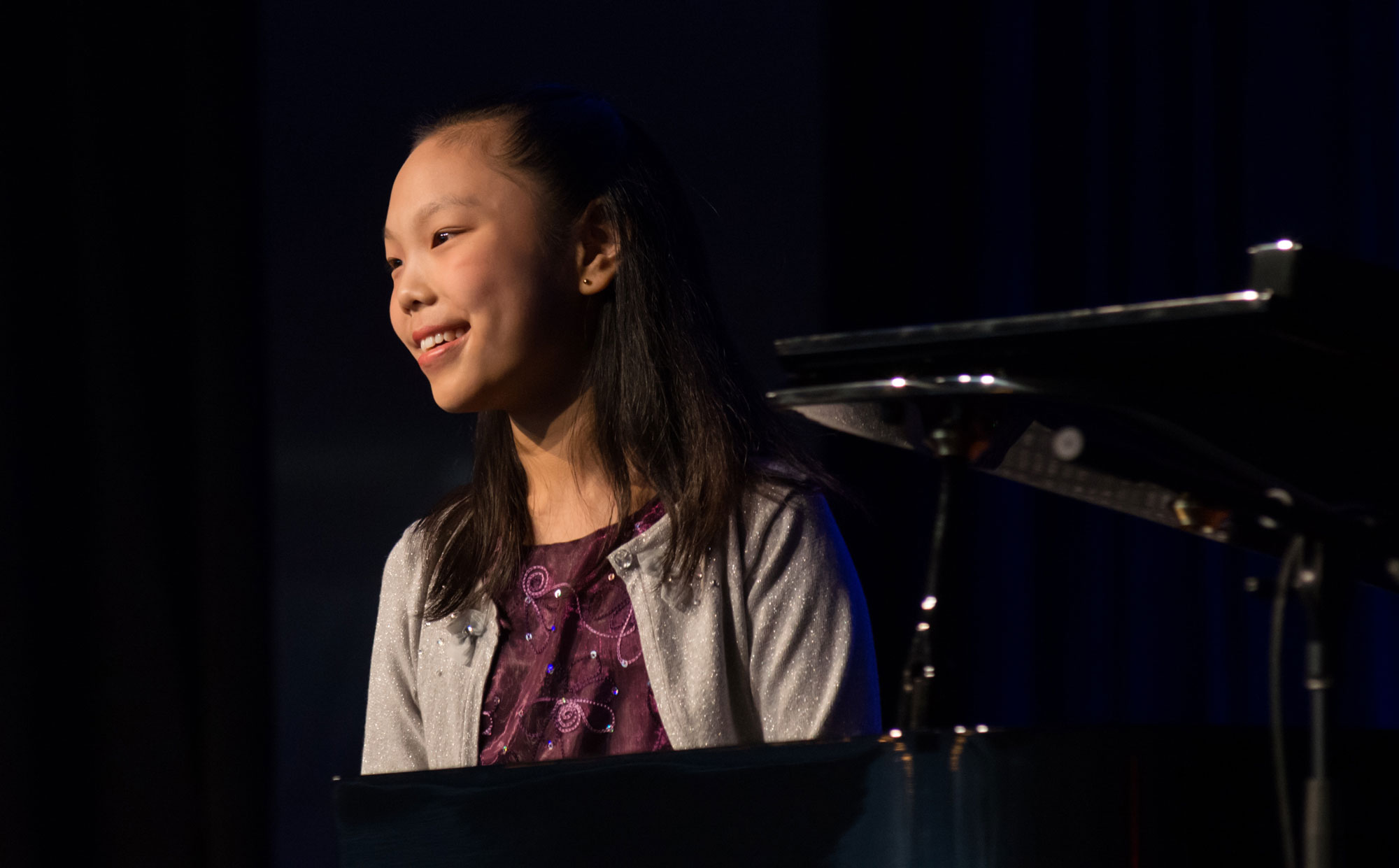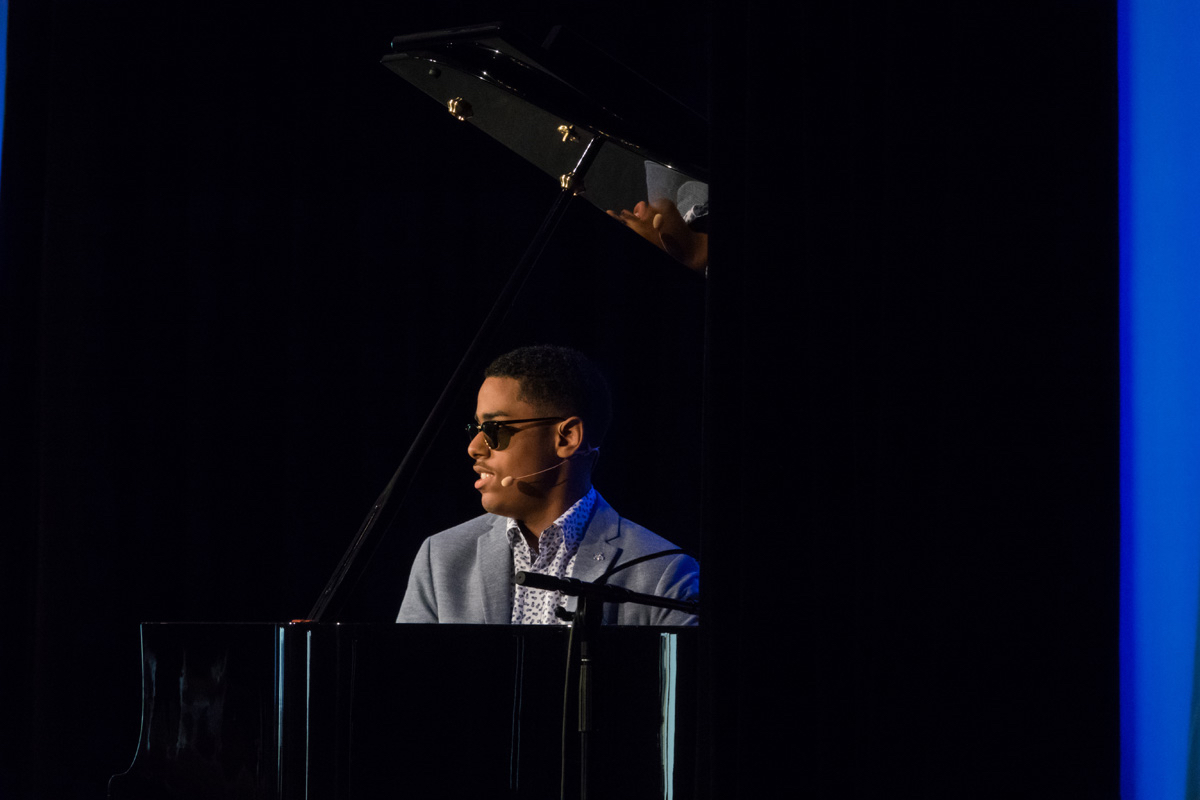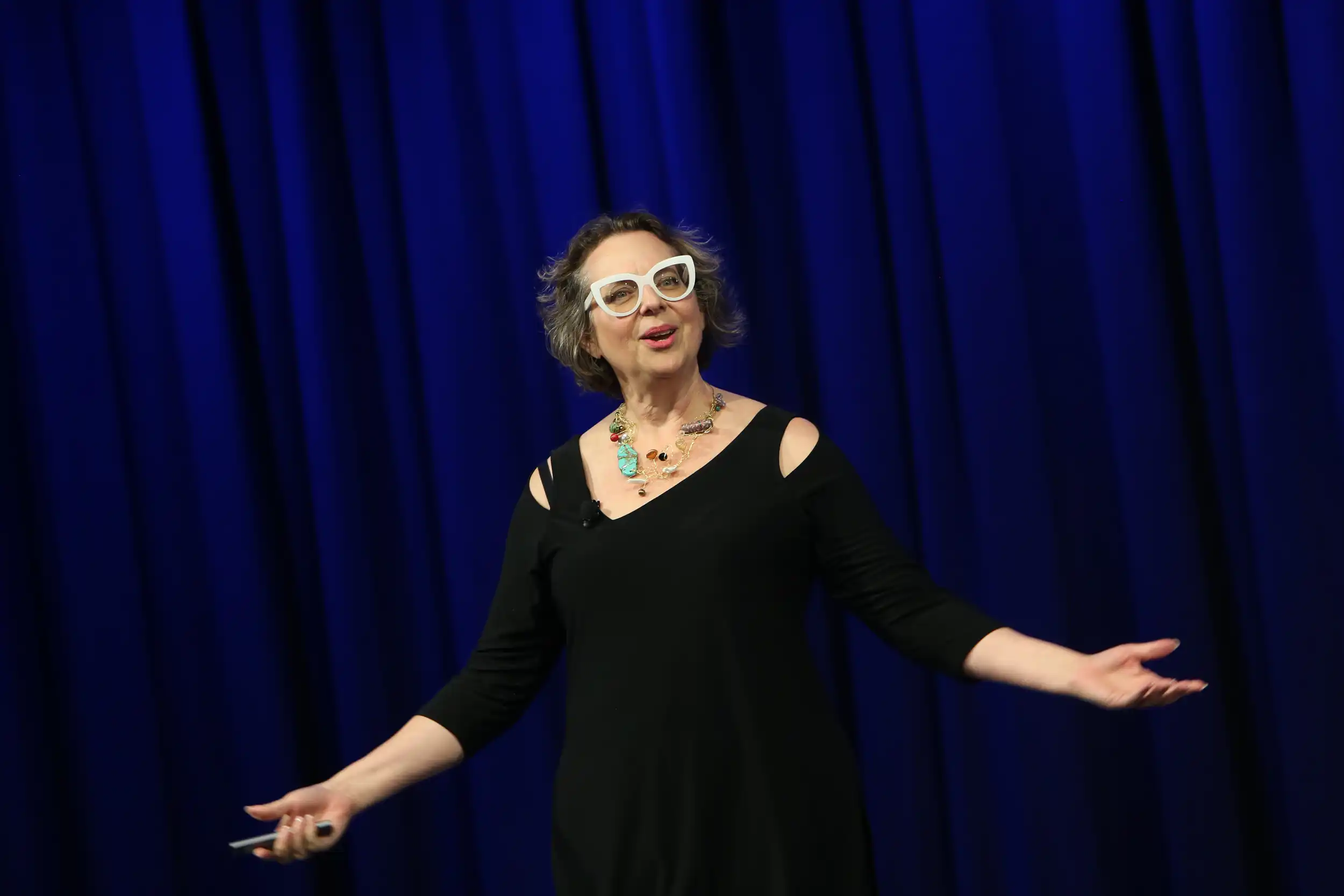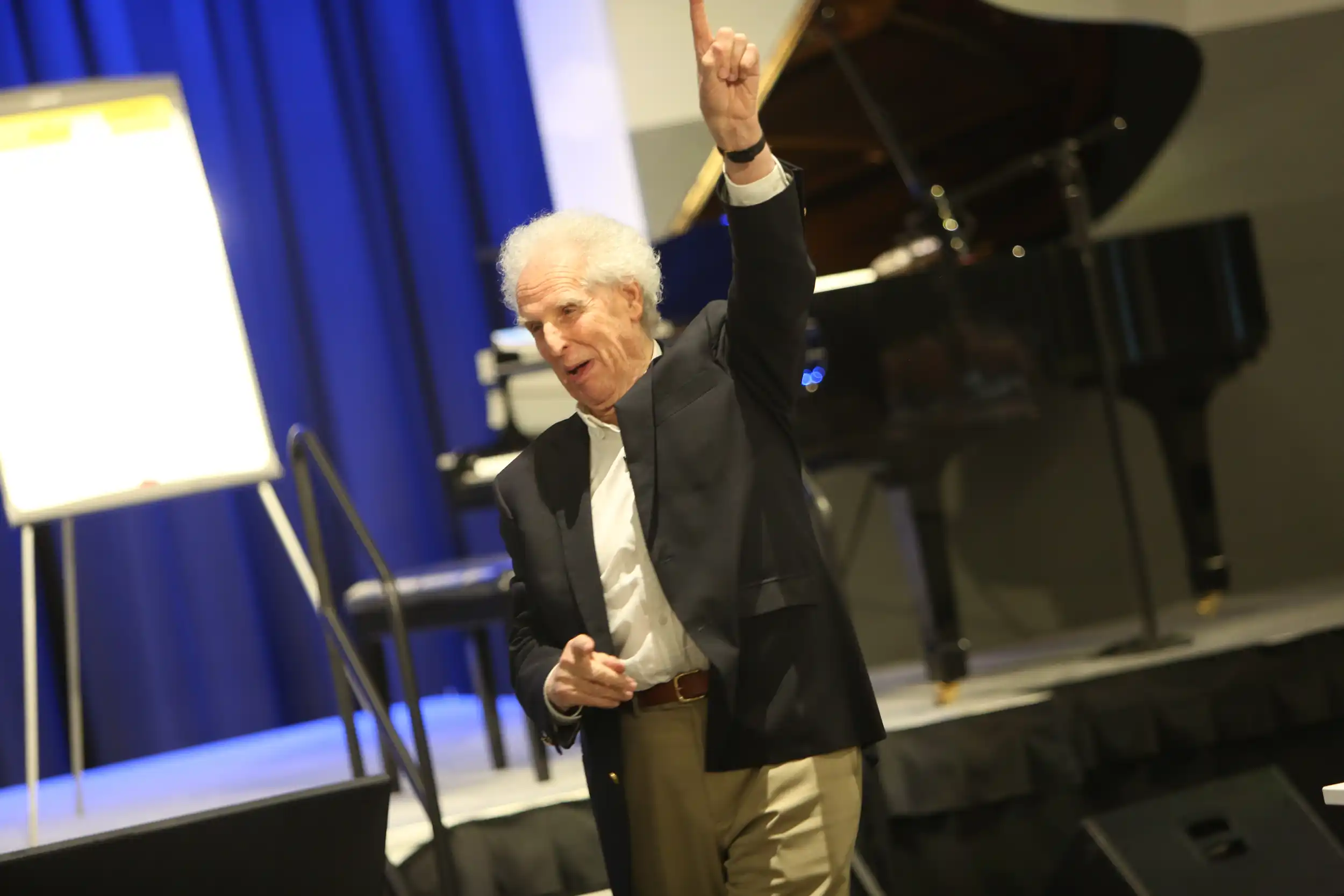Deconstructing the Beatles
Scott Freiman brought the Beatles’ music to life in a way few ever experience—by peeling back the layers of their creative genius. With rare audio clips, behind-the-scenes stories, and deep musical insight, he shared the creation of “Strawberry Fields Forever”. More than a music lesson, Freiman’s talk was a masterclass in innovation, collaboration, and bold experimentation.
00.00
[Music] this afternoon we're going to start with something else big as in the biggest musical band ever the Beatles our next speaker is a musician producer tech entrepreneur with a passion for uncovering the creative magic behind iconic music scott Fryman is the creator of Deconstructing the Music and the host of the PBS series Deconstructing the Beatles he's produced and starred in 11 feature films exploring Beatles music entertaining fans and scholars alike shared his insights with companies like Pixar Facebook and Google and even taught a semesterl long course on the Beatles at Yale today he's here to share his deep knowledge and passion with us he's going to take us through and deconstruct I believe a single song give a warm welcome to Scott Fryman
01.02
[Music] welcome good you have fun thank you well good afternoon everybody um thank you to Imagine Solutions for bringing me out and a special thank you to Randy it's been so great meeting him and I want to thank him for bringing me out can we can we give a round of applause to Randy what a great conference he puts on here i hope I'll get to attend again um so we ended right before lunch talking about magic and mystery and creativity and that was a perfect leadin to what I'm going to talk about the creative process and the mystery behind it there is so much mystery behind creativity whether it's music film the visual arts computer programming even scientific research we very rarely get to see the journey from an idea to the final result well today I have a remarkable story about the creative process from one of the greatest bands of all time the Beatles any Beatles fans here
02.02
okay and what's so cool about this story is that we can trace the idea step by step to the final groundbreaking song a song that combined these beautiful lyrics with incredible dreamlike soundsscapes a song which defied expectations and pushed the limits of the recording studio a song that wasn't so much composed and recorded as it was constructed deconstructed and reimagined through the magic of innovation experimentation collaboration and sheer artistic ambition today I'm going to take you on a trip through the making of the song Strawberry Fields Forever a song that changed popular music forever and our story begins in August of 1966 after years of relentless touring the Beatles John Lennon Paul McCartney George Harrison and Ringo Star are facing rockous crowds inadequate sound
03.02
systems and the inability to hear themselves play they've come out with all of this remarkable music over the last couple years but they can't perform it live due to the limitations of the technology of the time and so when they hit Candlestick Park in San Francisco on August 29th 1966 they've decided that will be their last concert they will no longer perform live and this was a huge deal because a band that only existed in the studio well that was kind of unheard of and the Beatles themselves weren't sure whether they would survive and so they take a little time off to travel and pursue other projects john Lennin is starring in a movie by Dick Lester called How I Won the War he's filming in Germany and he's playing the role of Musketeer Gripweed and while he's there on the set well film sets are really boring so he's got a lot of time on his hands to think he's missing his friends the other Beatles he's missing his wife he's worried about the Beatles future he's
04.00
kind of depressed and so when the production relocates to Amaria Spain he takes all of these feelings and he channels them into a new song and this is the first known version of that [Music] song i mean it's [Music] all but it's all right and it's not too [Music] bad i need a time to [Music] So these are unusual lyrics for a song
05.02
it's with filler words like I mean and that is it almost feels like a conversation and let's face it the words don't even rhyme right but what is he saying here well John always felt like he saw the world differently from other people he was either a genius or he was out of his mind there's no one on my wavelength he says but he's trying to comfort himself he says it's not too bad later on he moves into a mansion called Elcortico Romero and it's got a huge wall and a childhood uh school next door and he goes into the bathroom because everyone knows you sound better when you sing in the bathroom and he records a later version of the song and here is that version [Music] i mean it must be [Music]
06.03
too bad for the first time we have a chorus [Music] everything nothing is real nothing to [Music] them so John's sitting in Spain feeling a little depressed thinking about how he sees the world differently from everyone else and he thinks about this magical place where everything's okay called Strawberry Field and what is the Strawberry Field well back in Liverpool John's boyhood home was next door to this large imposing building which was an orphanage and there was a huge wall next to his house and there were kids
07.00
playing on the other side and he used to hop over the wall to play with the orphans at the orphanage and what was that orphanage called it was called Strawberry Field sitting in Spain listening to the kids playing at the school next door and thinking about his childhood when everything was okay and there was nothing to get hung about he conjures up this memory of this beautiful place called Strawberry Field okay so he comes back home from filming and he has a nice little studio at home and he continues to work on the song and there are hours of tapes of him trying out different arrangements and different instruments here's a little John trying out some different guitar patterns starting with some finger picking [Music] now he's going to try some strumming [Music] he's added this neat little thing for the chorus he's going to go into triplets 1 2 3 1 2 3 i'll show you that
08.02
here we go wow [Music] so no on November 24th 1966 the Beatles reconvene at EMI Studios to begin work on their next album now that album will be Sergeant Pepper's Lonely Hearts Club Band but they don't know it yet they're just starting their next album and what would typically happen is their producer George Martin would gather everyone around and say "Okay what what songs do you have for me?" Well John plays Strawberry Fields Forever and everyone is mesmerized and they can't wait to work on the song and so they do an arrangement in the studio they rehearse it and they lay down the first take before I talk about that though I want to talk about this this is the technology they're using at the time it's called a Stutter J37 fourtrack tape deck and what a fourtrack tape deck
09.00
would let you do is record up to four different things on one piece of tape four bands and you could record drums bass guitar let's say and then you could raise the volume of the drums or add some equalization to the guitar once you used up the four tracks you were done but then they start to do something called tapetoape reductions or bouncing and that's where they bring in a second tape recorder with a blank piece of tape and they press play on the first record on the second and merge tracks together and now that frees up a couple blank tracks where you can add percussion background vocals guitar solos whatever you want so this is great you can continue to layer instruments but the problem is you're working with analog media tape and so every time you make a copy you lose a little bit of quality in the sound not only that if you've made some mistake or you want to make a change and you've already merged instruments together tough luck if you want to raise the volume of the drums and you've mixed it with the bass the only way to fix that is to start over again and that's why I always like to give a shout out to these two people
10.01
george Martin their producer who oversaw the sessions and Jeff Emerch their engineer he's the guy who's responsible for the sound of these recordings the microphones everything that goes to tape the effects and so forth and the reason these songs sound so great 60 years later is because of these two guys and their team so it's important to remember that they're part of this collaborative process all right so the Beatles now have heard Strawberry Fields Forever they've rehearsed it they set up and they're ready to lay down their first take of the song and we're going to notice a couple things as I play a little bit of this take one is you'll notice some background vocals that after this take they decided they didn't want to do anymore you're going to notice that Ringo's drums are a little subtle at this point he's still trying to figure out what he wants to do with the song and lastly you're going to hear a strange slide guitar sound that I'll talk about in a moment here is the first take which begins with the verse and not the chorus take one living is easy with eyes
11.04
closed misunderstanding all you see it's getting hard to be someone but it all works out it doesn't matter much to me no one I think is in my tree i mean it must be high or low that is you can't you know tune in but it's all right that is I think it's not too bad now here's that strange slide guitar sounds let me take you down cuz I'm going to Strawberry [Music] Fields nothing is real and nothing to get hung about and now Paul and George singing backing
12.00
[Music] vocals think it's me but you know I know and it's a dream i think I know i mean yes but it's all wrong that is I think I disagree so this is pretty good right and it sounded nothing like other songs that were around at the time but the Beatles think they can do better and so they decide they're going to start over completely and this time they're going to do a much darker and moodier take and they're going to begin with an instrument called the Melatron the Melatron was one of the very original synthesizers we would actually call it a sampler today because it didn't make its own sounds it generated sounds by playing back tapes of flutes and trumpets and percussion and you pressed a key on the keyboard and the tape would play for about eight seconds and then rewind so you could play it again and
13.01
what happens on Strawberry Fields Forever is Paul McCartney leads in with a flute pattern that's played on the meatron and it sounds like this here is take two now this is just the backing track no vocals listen to how the feel of the song has changed [Music] so beautiful uh that slide guitar that we heard on the first take and we'll hear on other takes as well that's actually not a guitar at all it's playing back a guitar tape loop on the Melatron and actually bending the pitch
14.00
with a pitch wheel and that's why it sounds a little strange so they're using this this equipment in very very creative ways and by the time they get to take six they pretty much got things worked out they've added John's vocal they're going to do one of those bounces or tape to tape reductions so that they can add in some additional instruments a meatron on track two a second vocal from John on track three and here is the final version take seven of Strawberry Fields Forever or so they thought strawberry Fields Forever take seven remix from four track take six [Music] let me take you down cuz I'm going to strawberry fields nothing is
15.01
real and nothing to get hung about strawberry fields forever so everybody is thrilled with this except for one person John Lennon and he says to George Martin "You know what i think we need something a little different i want it to be more aggressive and I want you to do one of your orchestral arrangements." And Martin says "John if you want to do that we're going to have to get a whole new backing track and start over." And John says "Fine let's start over." And they do well the night that they're working on their backing track they're going to start on a session that starts around the evening and go to about 4:00 a.m the next morning it just so happens that Jeff Emer and George Martin are out at the premiere of a film called Finders Keepers a Cliff Richard film so they're not in the studio so there's some assistant assistant tape editor sitting behind the desk and the Beatles have invited all of their friends there may be a little smoking involved and they
16.01
decide to work on the new backing track of Strawberry Fields Forever so keeping in mind what we heard with Take 7 here's the new version of Strawberry Fields Forever so you can imagine when George Martin and Jeff Emerick get back from the movies and they hear this you know they're pretty surprised right but this is why George Martin was so great because rather than say "Okay guys you've had a lot of fun tonight clearly let's do it right he was just as willing to experiment as the other Beatles and so not only did he agree to work with this backing track but he was going to do just as unusual an orchestral arrangement rather than the strings he had done on songs like Yesterday and Eleanor Riby he was going to do trumpets and chel the trumpets would come in from
17.01
up above blaring away the chel would dig in underneath and that would leave room in the middle for John Lennon's vocal it was spectacular here is a little of that arrangement [Music] [Applause] [Music] [Applause] [Music] very dramatic digging chelly down at the bottom there and then the trumpets blaring up above like a fanfare so there was one key instrument added before the final take and this came from George Harrison's growing fascination with eastern music and eastern culture and it's an instrument
18.01
called the swarmendell it's like an Indian harp it sounds like [Music] this okay so that's George Harrison playing that swarm and by the time we get to the final take take 26 we now have that swarm on track four you could see a bunch of vocals you could see some drums and percussion and you could see George Martin's arrangement on track two and by the way take 26 yes that's a lot of takes but pretty soon they're going to be doing 100 takes of songs okay these guys like to get it right so here is George Martin to walk us through take 26 let me take you down cuz I'm going to strawberry fields double track voices on three and four but with percussion as well on three swarmandela [Music] an Indian instrument that George had
19.02
brought back like a kind of heart in a marvelous place [Applause] [Music] backwards symbol on [Music] always sounds like Russian language to me [Music] brass stabs and so on and with the cello but underlying it all this wonderful rhythm section there's that percussion track about nine or 10 players [Music] this third version of the song was truly spectacular everyone thought it was amazing i mean the swarm andell the percussion the brass and the chel and John's haunting vocal everyone was ecstatic this was groundbreaking stuff
20.02
but there was one guy who wasn't happy and I'll let you guess who it was does anyone want to guess john Lennon yes john Lennon said "George Martin I'm not happy i liked take seven i like the way that felt but I also like take 26 i like the way that feels can we take like the beginning of take seven and the end of take 26?" And George Martin says "No." First of all this version the Take 26 is much faster than Take Seven so it's a different speed and secondly take seven we recorded in the key of A and take 26 we recorded in the key of C two different tempos two different keys there's no way to combine them and Lenin who didn't really care too much about how technology works said "You'll figure it out." And left well amazingly George Martin and Jeff Emer did figure it out using a technique called Varys Speed where you can change the speed of playback of a tape recorder they figured out if they
21.02
took that take seven and they sped it up a little bit on the tape machine it would raise the pitch from A to roughly B flat and if they took take 26 and slowed it down using vary speed it would lower the key from C to roughly B flat and that's exactly what they did and you can hear that clear as day if you isolate the channels for example here is the left channel and you'll hear the cut right as John sings let me take you down cuz I'm cut going to matter let me take you down [Music] sounds a little different right two different takes and here's the right channel you'll hear the trumpets and the chel come in same place it doesn't matter much to [Music] me let me take you down cuz I'm going to
22.02
Strawberry pretty wild the final version of Strawberry Fields Forever is a combination of two completely different versions of the song with different instrumentation different speeds and different keys combined through the magic of studio technology it was a true collaborative effort taking that early demo of John Lennon and transforming it with the help of the other Beatles and George Martin and Jeff Emer into this magnificent piece when Strawberry Fields Forever came out it was not on Sergeant Pepper it was actually released as a single on February 13th 1967 and fans and critics took notice this sounded different than anything else that was out there and would set the pace for a lot of new music that was much more adventurous musicians were the ones who really took notice for example Brian Wilson of the Beach Boys had had this friendly rivalry with the Beatles over the last couple years where they would kind of spur each other on with the work that they were putting out well Brian was working on his follow-up to his masterpiece Pet Sounds it was going to
23.02
be a magnum opus called Smile but when he heard Strawberry Fields Forever he said "They did it already." And he gave up he completely abandoned this project he'd been working on so hard and what about all of those British invasion bands and the American bands that were kind of copying that early Beatles sound well here's what Paul Rivere and the Raiders had to say about Strawberry Fields Forever so Strawberry Fields Forever it's not just a great song it's a testament to the power of imagination the willingness to embrace change and the beauty of artistic risktaking it shows us that the creative process is a journey that can lead to unexpected places but every now and then like with Strawberry Fields Forever it leads to some place extraordinary thank you all very much couple of questions stick around
24.01
okay how much acid were they doing um there was a little bit of acid around this time yes but typically interestingly enough they didn't do a lot in the studio yeah they didn't do a lot in the studio because they had to work and this was hard stuff that they were doing it i remember when that song came out and I thought this was a totally different sound and it was to me the sound of four guys who were really high well certainly they were having their mind expanded with not only with drugs though with writing with art they were soaking in everything that was going on in the culture there was a lot going on in England around the time they were listening to other groups and all of that kind of filtered in and the Beatles always wanted to do better they listened to everyone else and they wanted to do something that was different and better and they did with this who was the most ambitious Beetle uh so that's a hard one i I mean I think to a large extent Paul McCartney would would be the one who kept pushing the Beatles to go forward i think John around this time was also extremely ambitious i mean John wanted to do new
25.00
sounds and new new instrumentation and as you could tell from this story he was never satisfied he wanted to try different things yeah what's amazing is you think you listen to music and you think "Okay well they just sat down and they played it and they and they sent it out and it was done." Yes but this was 30 takes you said they went up to a hundred takes eventually yes yes and I'll tell you a very quick story um and then I'll get off stage right before John Lennin died he and George Martin met up for lunch and George Martin was talking to him about the Beatles history and John Lennin said "If I could I would redo everything." And George Martin said "Not Strawberry Fields forever." And John Lennon said "Especially Strawberry Fields Forever." Really how about that so Scott thank you so much Scott Fryman [Music]

